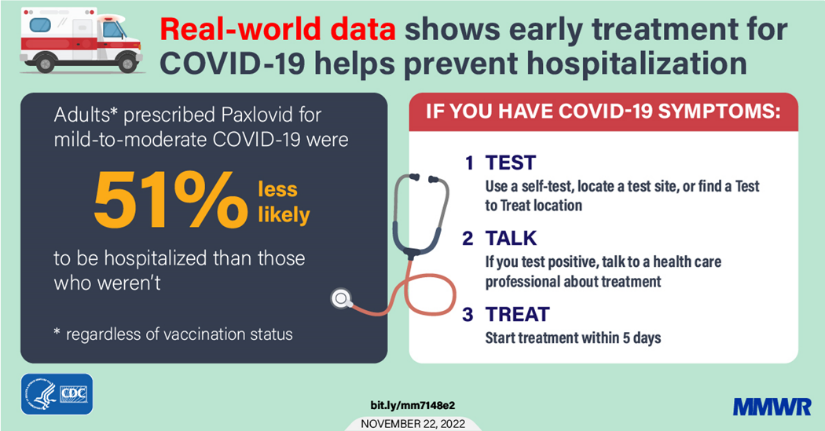Thursday Miscellany

From our Nation’s capital, the Wall Street Journal reports
The Treasury Department began taking special measures to keep paying the government’s bills on Thursday as the U.S. bumped up against its borrowing limit, kicking off a potentially lengthy and difficult debate in Congress over raising the debt ceiling.
With the federal government constrained by the roughly $31.4 trillion debt limit, the Treasury Department began deploying so-called extraordinary measures. Those accounting maneuvers, which include suspending investments for certain government accounts, will allow the Treasury to keep paying obligations to bondholders, Social Security recipients and others until at least early June, the department said last week.
That gives lawmakers on Capitol Hill and the Biden administration roughly five months to pass legislation raising or suspending the debt limit. In a letter to congressional leaders on Thursday, Treasury Secretary Janet Yellen said there was “considerable uncertainty” about how long extraordinary measures can last.
“I respectfully urge Congress to act promptly to protect the full faith and credit of the United States,” Ms. Yellen said.
From the OPM front, OPM issued “Guidance on Increasing Opportunities for Federal Internships, Fellowships, and Other Early Career Programs” and, according to MeriTalk, held a “virtual job fair organized today by Tech to Gov in partnership with the Office of Personnel Management (OPM) is targeting a wide range of Federal government technology and related positions as part of the government’s goal to restock its tech ranks amid a slowdown in hiring by the private sector.” As daily reports of layoffs at tech companies have been appearing in the news, OPM’s timing for the job fair is opportune.
Today, benefits expert Tammy Flanagan completed her three Govexec columns on federal employee and annuitant benefit changes for this year.
From the Omicron and siblings front,
MedPage Today tells us, “Real-World Data Support Bivalent COVID-19 Boosters in Older Adults — Study from Israel showa ed high level of protection in people 65 and up.” MedPage Today’s medical editor in chief Dr. Jeremy Faust comments
[T]he Israeli data really helps us understand that for 65-years-olds and over, getting a bivalent booster is going to protect against hospitalization. We don’t know how long that’s going to last, and that’s the key. If it turns out that the bivalent booster ends up having a much longer tail of effectiveness than the monovalent did, that’ll be good news, but it’ll depend upon what variants are circulating and other factors, but we are watching that.
Reuters adds
The European Union’s drug regulator has not identified any safety signals in the region related to U.S. drugmaker Pfizer Inc (PFE.N) and German partner BioNTech’s updated COVID-19 shot, the agency said on Wednesday.
On Friday, the U.S. Food and Drug Administration and the Centres for Disease Control and Prevention said that a safety monitoring system had flagged that the shot could possibly be linked to a type of brain stroke in older adults, according to preliminary data.
The FDA’s Vaccines and Related Biological Products Advisory Committee will consider this safety issue at a meeting on January 26.
Also from the FDA front, the Wall Street Journal informs us
U.S. drug regulators rejected Eli Lilly & Co.’s proposed new Alzheimer’s disease treatment, saying they need more data from clinical testing, according to the company.
The setback could delay a potential commercial introduction of the highly anticipated drug by at least several months, if the Food and Drug Administration eventually decides to approve it. * * *
The agency had recently approved another Alzheimer’s therapy. Earlier this month, the FDA gave early approval to a new Alzheimer’s drug from Eisai Co. and Biogen Inc.
Lilly had been hoping for an accelerated FDA approval of donanemab early this year. Now, a midyear filing of a standard drug application means an FDA decision could be pushed back into 2024, based on typical FDA timelines of taking six to 10 months to review new drug applications.
The American Hospital Association relates
In an online survey last November of 1,200 U.S. adults previously vaccinated against COVID-19, 62% had not yet received a bivalent booster dose, most often because they did not know they were eligible or the booster was available, or believed they were immune against infection, the Centers for Disease Control and Prevention reported today. After viewing information about eligibility and availability, over two-thirds of them planned to get a bivalent booster and 29% reported receiving the booster in a follow-up survey in December. To help increase bivalent booster coverage, the report recommends using evidence-based strategies to inform patients about booster recommendations and waning immunity.
From the No Surprises Act front, Healthcare Dive points out
- Many Americans are still exposed to the potential for a surprise medical bill from an out-of-network ambulance ride, a research report published in Health Affairs found. About 28% of emergency trips in a ground ambulance resulted in a potential surprise bill, according to the research that analyzed commercial insurance claims.
- About 85% of emergency transports were deemed out of network between 2014 and 2017, researchers found. But two-thirds of those trips are paid in full by insurers, eliminating the risk of a surprise bill.
- The report shows the difference in pricing by ground ambulance ownership and how that affects patients’ financial exposure. * * *
- Given the high prevalence for a potential surprise bill, protections like those afforded to consumers in the No Surprises Act may be necessary for both emergency and non-emergency transports, the authors said.
The FEHBlog is puzzled by the author’s extension of NSA protection to non-emergency transports, which the consumer should have time to manage. Congress should not overload the NSA system.
From the telehealth front, Healthcare Dive reports
- Private insurers paid roughly the same for telehealth and in-person visits during the early days of the COVID-19 pandemic as virtual care surged, according to new research from the Kaiser Family Foundation.
- Though it’s unclear how payment rates might have changed over the past two years, the findings call into question the argument that telehealth is saving the healthcare system money, researchers said.
- However, researchers said that perks of telehealth included expanded access and convenience — cost benefits of which were not factored into the study.
Fierce Healthcare tells us
UnitedHealthcare is rolling out a new virtual behavioral health coaching program backed by Optum.
The offering is available as of Jan. 1 for 5 million fully insured members, and self-insured employers can purchase the program as an employer benefit. Through the program, adults with symptoms of mild depression, stress and anxiety can access support for their mental health needs through virtual modules as well as one-on-one video conferences, phone calls or messaging with coaches. * * *
Members who use virtual coaching can connect with a dedicated behavioral health coach for a 30-minute weekly audio or video call and can chat with their coach using in-app messaging between sessions.
The program lasts eight weeks, and each member will complete an assessment at the onset to identify their individual needs. Coaches use cognitive behavioral therapy techniques to assist the patient in crafting an action plan that is personalized to them.
In other UHC news, Beckers Payer Issues relates
The largest employer of physicians in the United States is not HCA, the VA, or Kaiser Permanente — it’s UnitedHealth Group’s Optum.
With at least 60,000 employed or aligned physicians across 2,000 locations in 2023, Optum has cemented itself at the forefront of the quickly changing healthcare delivery landscape. For comparison, Bloomberg reported in 2021 that Ascension employs or is affiliated with 49,000 physicians, HCA has 47,000 and Kaiser has 24,000.
Given that the Affordable Care Act limits health insurers, but not healthcare providers, profits, UHC made a smart move, in the FEHBlog’s opinion.
From the Rx coverage front, STAT News tells us
In a bid to blunt competition and address rising drug costs, Sanofi is offering a warranty that will cover the cost for any hospital if a specific medicine fails to work, marking only the second time a major pharmaceutical company has taken such a step.
In this instance, Sanofi designed a warranty program for its Cablivi medication, which is used to treat aTTP, a rare, life-threatening autoimmune blood disorder that is considered a medical emergency. The cost will be refunded for up to six doses for patients who fail to initially respond or up to 12 doses for patients whose condition worsens.
The move comes after Pfizer began offering warranties for two of its medicines, the first of which debuted in August 2021. At the time, the Pfizer effort was the first of its kind in the pharmaceutical industry. Unlike the Sanofi warranty, however, the Pfizer programs offer refunds to patients — not hospitals — if the medicines fail to work sufficiently.
Although the approaches vary, both companies are signaling their interest in differentiating themselves from competitors, not just responding to complaints about the rising cost of medicines, according to Emad Samad, president of Octaviant Financial, a firm that is promoting the use of warranties in the pharmaceutical industry.
How would these warranties redound to the benefit of third party payers?
From the miscellany front
- Cigna offers a paper about “Digging into the Unique Drivers and Healthy Behaviors That Impact Vitality.”
- The U.S. Preventive Services Task Force released a chart of its most impactful 2022 recommendations.
- Fierce Healthcare reports, “The number of providers serving as [Medicare] accountable care organizations increased slightly this year thanks to the start of a new advanced model and a slew of reforms meant to reverse a slide in participation.”
- Mercer Consulting digs into “must do” valued based care strategies.
- The MIT Technology Review considers the prospect of gene editing for the masses using CRISPR 3.0
- STAT News discusses the “hot mess” of legal issues associated with the FDA’s recent decision to make abortion drugs available at pharmacies.






